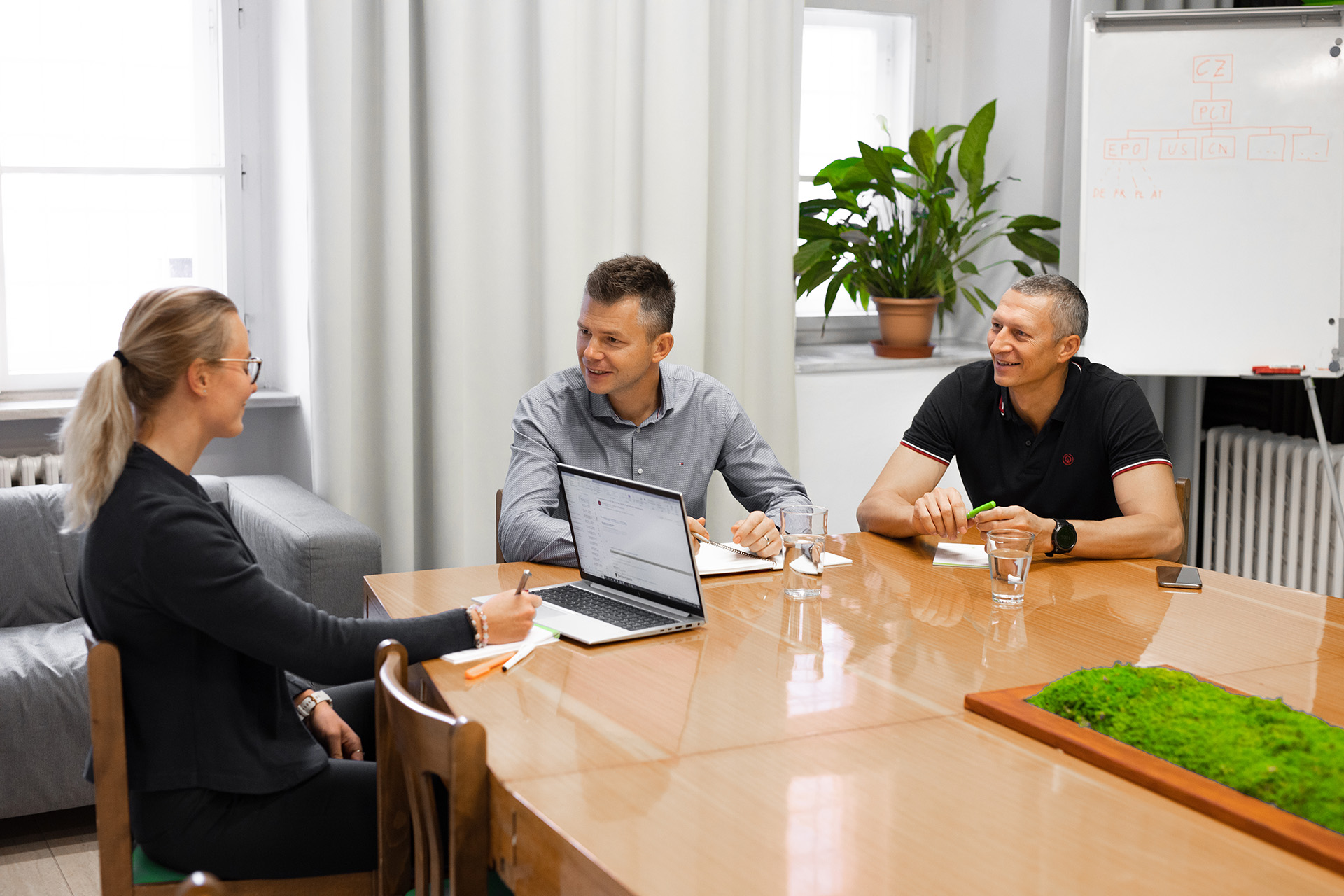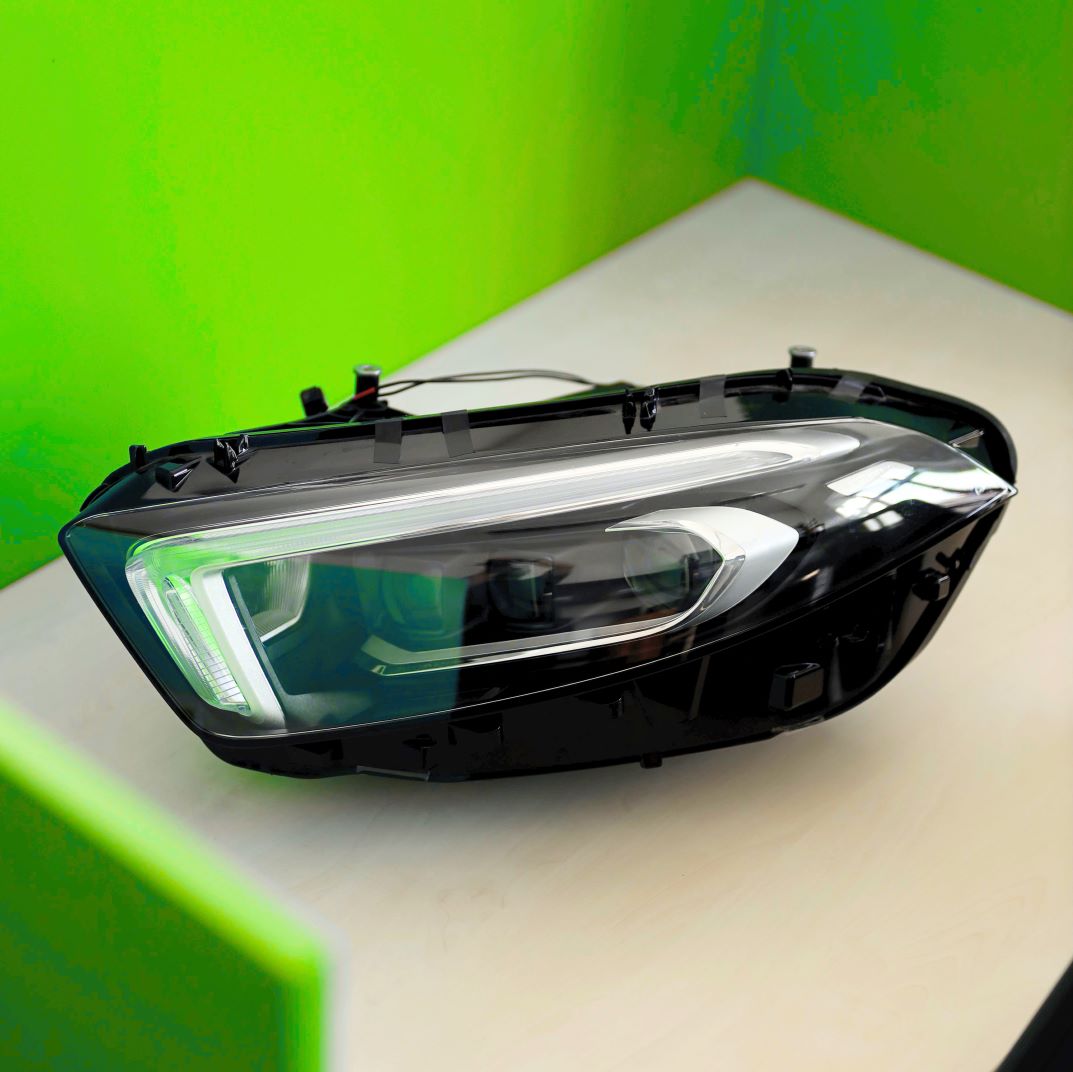Patents and Utility Models
Industrial rights are a powerful tool, whether you need to safeguard your innovations or make it difficult for the competitors to monopolize their solutions.
We will do our best to make sure that you achieve your business goals.


Our services
Our direct experience from research and development of multinational manufacturing companies or academia ensures that we are able to prepare patent/utility model applications so that the acquired rights constitute real business value for you and may be used worldwide.
Patent proceedings may be a costly affair. That’s why our priority is to help you obtain a protection that enhances your competitive edge, steering clear of unnecessary expenses with limited advantages. Your business intent influences the approach we take.
A tailored solution might include:
International proceedings
Patent validation in CZ and SK
Related contracts and licences
Annuity payments
IP trainings
Litigation, cancellations and right enforcement

As patent attorneys, we are legally bound to confidentiality.
Your ideas and innovations are safe with us.
Frequently asked questions
Both patents and utility models protect tech innovation. In terms of the scope of protection, there is almost no difference between them; it depends on what you need from either.
You can obtain a utility model more quickly – within a few months – because the patent office does not examine whether your solution is new and innovative during its registration.
However, utility model provides only half the maximum protection period (10 years) compared to a patent. A utility model does not protect manufacturing methods; they can only be patented.
On the other hand, some less complex technical solutions might not stand as a patent before the office – in such cases, it is more suitable to use a utility model.
Moreover, unlike patents, utility models do not exist worldwide. Therefore, in some countries, you cannot obtain them at all.
The cost of patent protection can depend on many factors — from the complexity of the invention to the territorial coverage.
If you are interested in a Czech patent, the costs are usually in the range from 40,000 to 100,000 CZK until the patent is granted, after which annual maintenance fees are paid to keep the patent valid.
Protection abroad can then mean additional costs of hundreds of thousands of crowns, depending on the breadth of territorial coverage, of course.
Patents are granted for inventions that are new, able to be used (they have to work) and non-obvious (meaning the invention is not easily perceived by someone with ordinary skill in its field).
The best way to check that these conditions are met is to perform a patentability search. If you find out in time that your solution cannot be patented, you will save the costs otherwise spent on preparing a patent application that would eventually be rejected by the patent office.
Typical examples of inventions you can patent are new products and technologies, manufacturing processes, chemically produced substances and pharmaceuticals.
By law, you cannot patent, for example, scientific discoveries or theories. However, the use of this knowledge in a particular technical application may already be patentable.
In patent protection, it is more important when you file the application than when you actually obtain a patent. The patentability of your invention will be assessed based on the date of application.
After submitting the application, you can then publicize, promote, or otherwise showcase your invention.
The length of patent proceedings is usually several years and it may vary significantly from case to case. To a large extent, it depends, for example, on how thoroughly the patent application was written, or on similar documents that the patent office finds during their research.
If you do not exclusively seek a patent, but the fastest possible protection, it may be more appropriate for you to file a utility model application. In such case, the process usually takes several months.
The patent will be valid as long as you pay the annual maintenance fees, but for no more than 20 years from the application filing date. An exception may be so-called supplementary protection certificates, which serve to extend patent protection for pharmaceuticals or plant protection products for 25 years.
There is no such thing as a “worldwide patent”. Each patent is valid only in the specific territory where it was granted and where maintenance fees are paid.
If you are interested in protection in more than one country, you can file a single international application using the PCT system, but even in this case the decision to grant a patent will ultimately be made by national IPOs.
Various regional patent systems, such as the EPC system for obtaining a European patent, can also help you to seek protection in more countries around the world.
When expanding abroad, we’ll assist you in designing a protection strategy aligned with your business goals and financial capabilities.
A patent is valid in the countries where it is granted under the patent proceedings therein. Some countries are part of supranational patent organisations that unify patent proceedings for member countries.
For example, the Czech Republic is a member of the European Patent Organisation, and a European patent can be valid on our territory without going through the Czech patent procedure.
You have 12 months from the application filing date of your patent or utility model to file applications abroad. If you file a PCT international patent application within this period, the time for patent applications in specific countries or regions will be extended by approximately 18 months.
In total, you may have approximately 30 months from the application filing date to decide which territories to seek patent protection in.
If you miss these deadlines, you lose the opportunity to obtain protection in other territories. The applications are then examined separately, and the later ones do not meet one of the basic conditions of patentability — novelty.
Certainly.
No improvement is too minor if it has a technical effect or solves a technical problem. In particular, it depends if such an improvement is new and not obvious from the known state of the art. Basically if it meets patent criteria.
However – if you are planning on manufacturing or for example selling the improved part, make sure to check that you’re not risking infringement others’ rights.
In almost every patent proceeding, the Office returns the application with an official notice (reproach). It is necessary to respond to this notice and to present arguments to the Office as to why the proceedings of the patent application should continue.
We therefore recommend that you use the services of a patent attorney who will check whether the application meets all the formal requirements and conditions of patentability with respect to the documents objected to by the Office. Among other things, they will also check whether the claimed scope of protection is set correctly and suggest further steps.
However, in the case of unprofessionally prepared applications, the only solution is often to withdraw the current application and file a new one. Nevertheless, this is not possible in cases where the invention has already been disclosed in the meantime.
In the first instance, we recommend that you cooperate with a patent attorney to investigate whether the allegation of infringement of the patent in question is justified.
If so, possible next steps include a licensing agreement with the rights owner, circumventing the patent by modifying the technical solution or attempting to revoke the patent.
Otherwise, it is appropriate to reply to the patent owner with the reasons for this view. If the owner nevertheless decides to enforce the rights, the competent patent court will decide.
Before taking the legal route to enforce your rights, it is advisable to first inform the infringer by registered letter and start negotiations with them or offer a licence.
You can also choose a qualified mediator to guide the negotiations towards an agreement, or Industrial Property Office of the Czech Republic can be asked to provide its opinion on whether a particular subject matter falls within the scope of a given patent. If you still cannot reach an agreement, you must enforce your rights through the courts.
To avoid such a situation, it is advisable to carry out a search to check both the industrial and legal integrity of the technical solution, the design and preferably the name of the product.
Preferably during the development or before the product is placed on the market.
Innovations and technical solutions can be protected by a patent or a utility model if they meet the respective criteria.
Names, logos, colors, and other designations (signs or brand symbols) can be protected with a trademark, while the appearance of a product can be safeguarded with industrial designs.
Aspects not easily recognizable in the product itself can be protected as trade secrets.
It’s essential to check whether your product meets the conditions for various forms of protection before launching sales or introducing your product to the public.
If you’re unsure, we’ll help you navigate through them and choose the most suitable path.
If the product has already been disclosed, for example by sale, it is still possible in some countries to obtain protection for the technical solution during the so-called “grace period”.
You will no longer obtain a patent, but you can apply for a utility model in the Czech Republic within 6 months of publication.
For design, protection can be obtained for up to 12 months after publication.
Utility models are used to protect technical solutions, similar to patents. The scope of protection arising from a utility model is defined by sentences – claims for protection.
In contrast, industrial designs are used to protect the appearance of a product, not its technical substance. The scope of protection is determined by the representation of the industrial design.
The best practice is to file a patent application, utility model application or industrial design before you provide details of the innovation to potential investors.
If the application has not yet been filed, it is advisable to sign a non-disclosure agreement (NDA) with the investors.



